CHAPTER 3 Art of Mesopotamia and West Asia (5000–2000 BCE)
1/19
There's no tags or description
Looks like no tags are added yet.
Name | Mastery | Learn | Test | Matching | Spaced |
|---|
No study sessions yet.
20 Terms
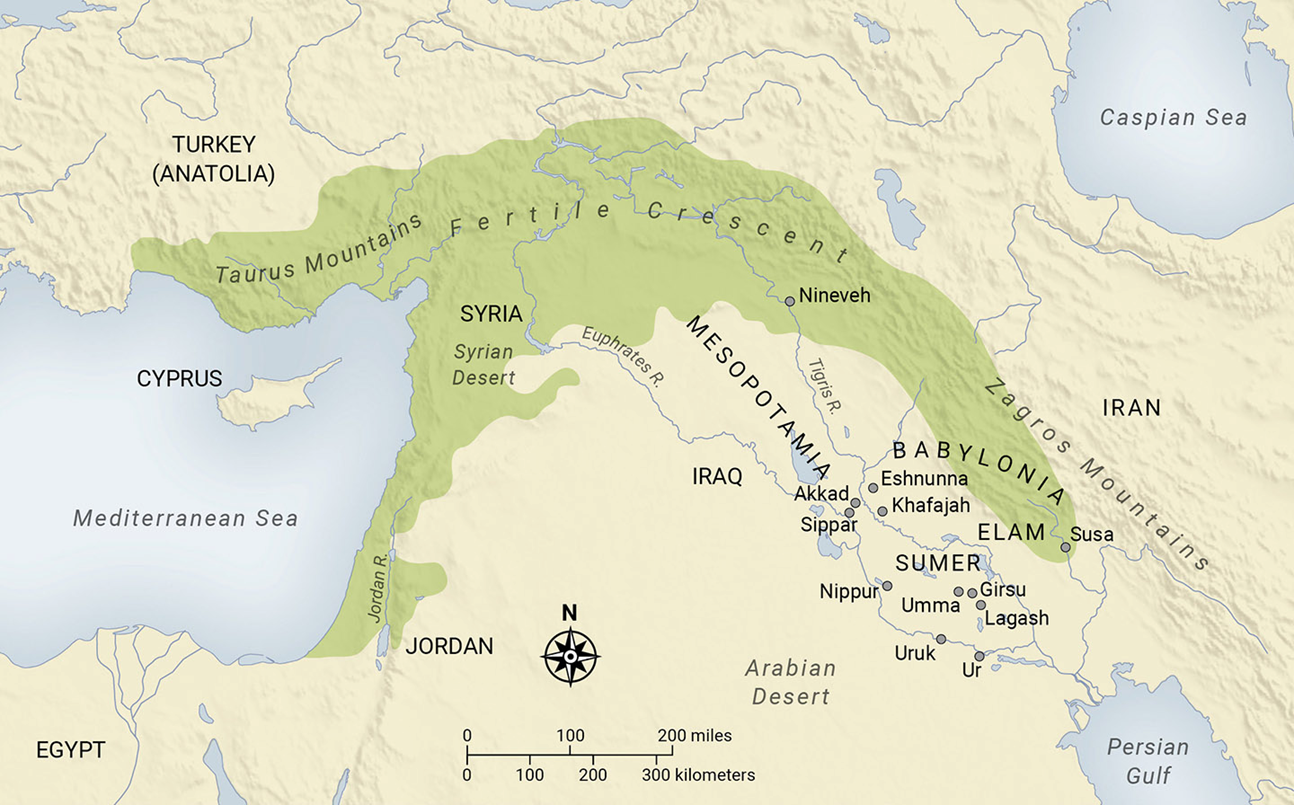
Map 3.1 Mesopotamia and the Fertile Crescent, 3300–2000 BCE.
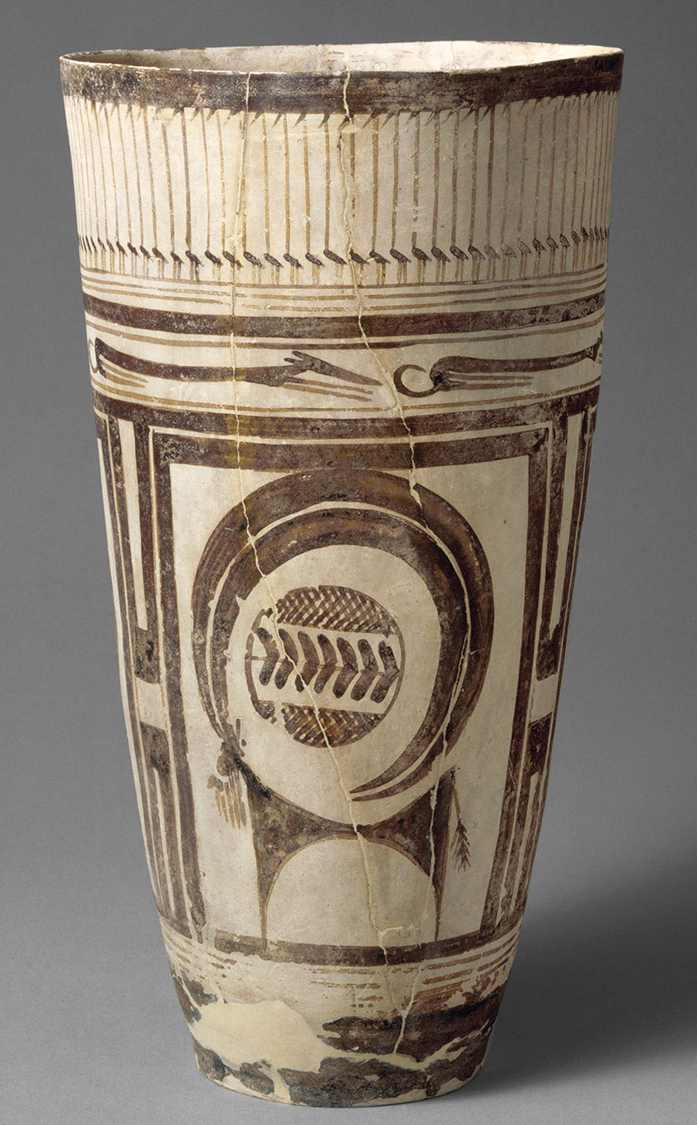
3.1 Beaker with decoration of animals, Susa, Iran, 4200–3800 BCE. Painted ceramic, height 11⅜ in. (28.9 cm), diameter 6½ in. (16.5 cm). Musée du Louvre, Paris
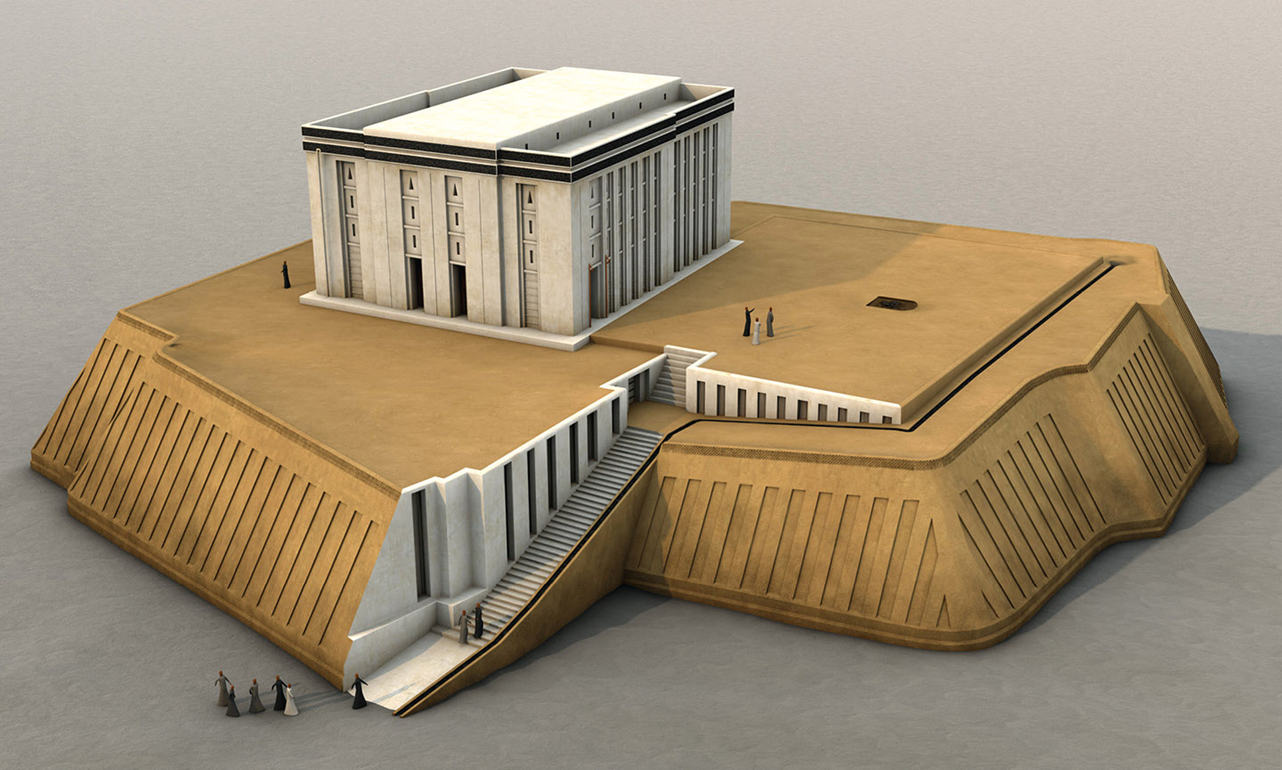
3.2 Temple of Anu (White Temple) at Uruk (Warka, Iraq), c. 3300 BCE. Reconstruction proposal, 2012. Whitewashed temple, with niches, approximate area 57½ × 73 ft. (17.53 × 22.25 m).
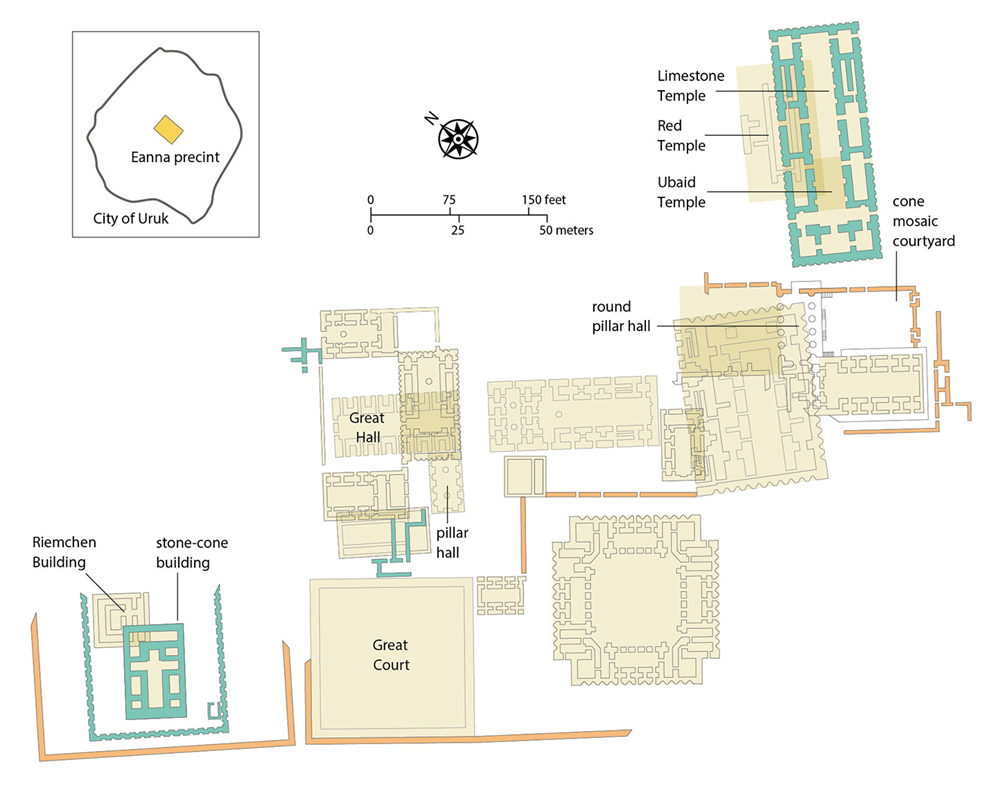
3.3 Plan of the Eanna complex at Uruk (Warka, Iraq), late Uruk period, 3500–3100 BCE.
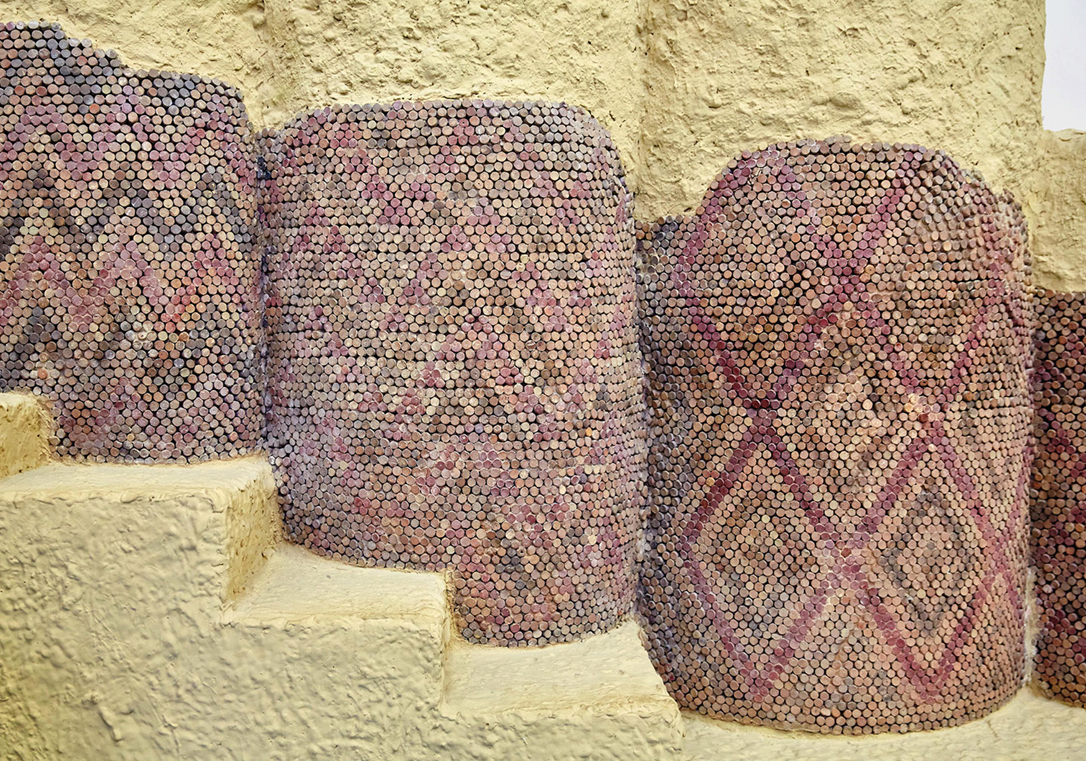
3.4 Cone mosaics at Uruk, (Warka, Iraq), late Uruk period, 3300–3100 BCE. Excavated at the Eanna complex. Pergamon Museum, Berlin.
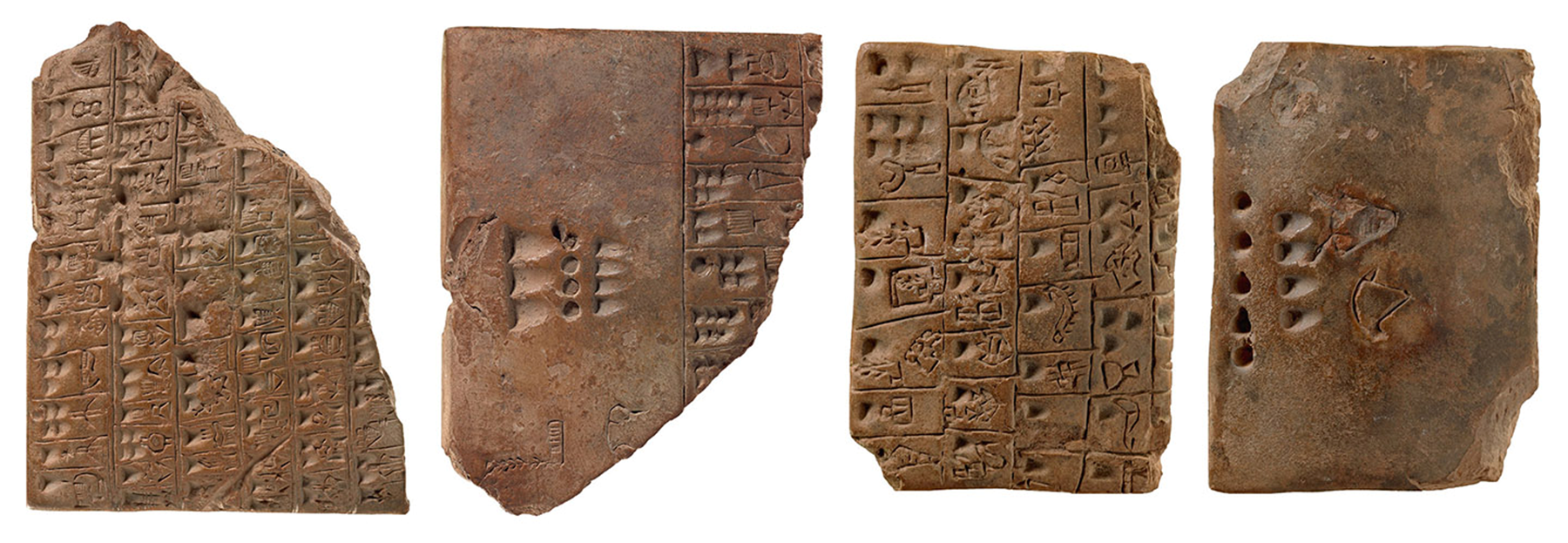
3.6 Early tablets from Uruk, from the Eanna precinct. Leftmost tablet: 4 × 3⅛ × 2 in. (9.9 × 7.8 × 5 cm). Vorderasiatisches Museum, Berlin.

3.7 Development of the cuneiform signs for “head” and “ration” from the earliest pictograms of the late Uruk period to the Neo-Babylonian glyphs of c. 600 BCE.
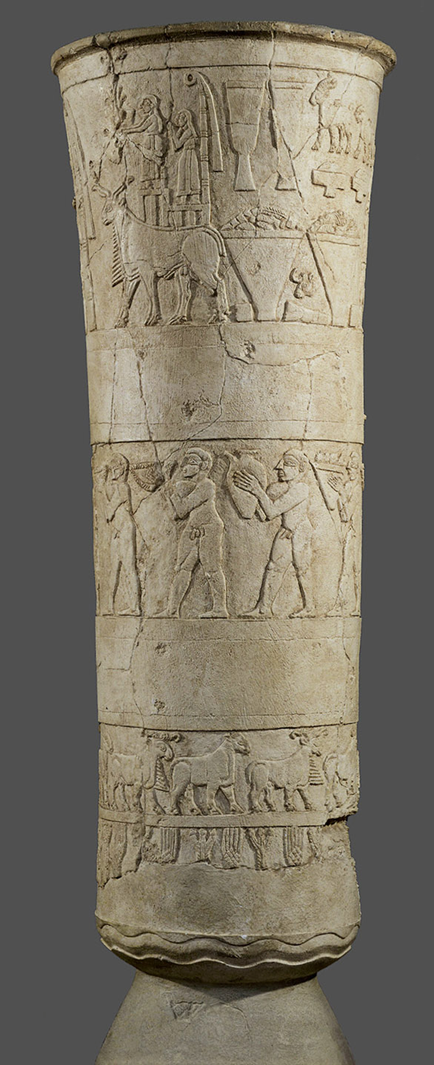
3.8 (Far Right) Uruk Vase, carved with low relief representations in registers, c. 3200 BCE. Alabaster, height 41⅜ in. (105.1 cm). Iraq Museum, Baghdad
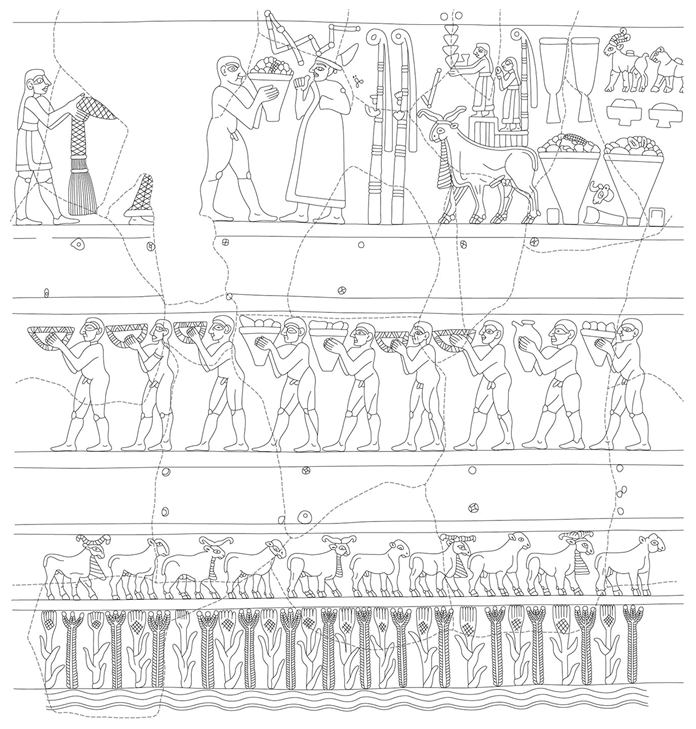
3.8a Relief carving on the Uruk Vase (reconstruction drawing).
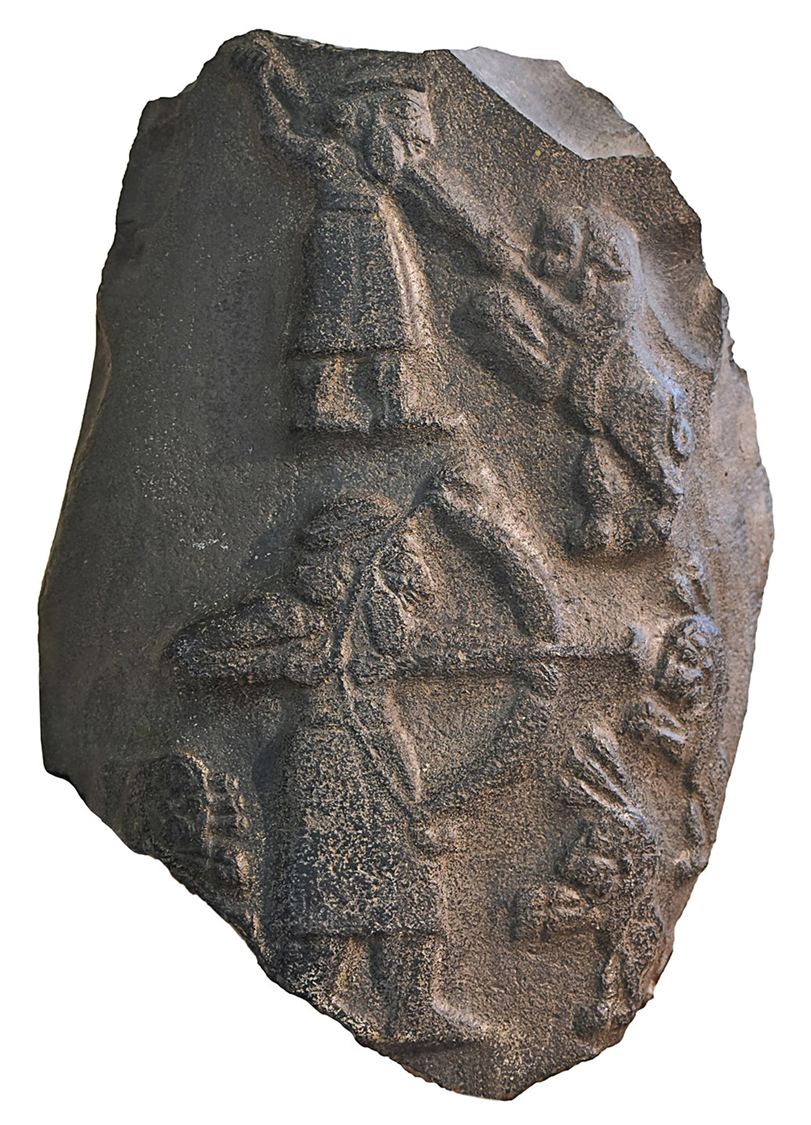
3.9 Lion-Hunt Stele from Uruk, (Warka, Iraq), Eanna precinct, 3200 BCE. Basalt, height 31½ in. (80 cm). Iraq Museum, Baghdad
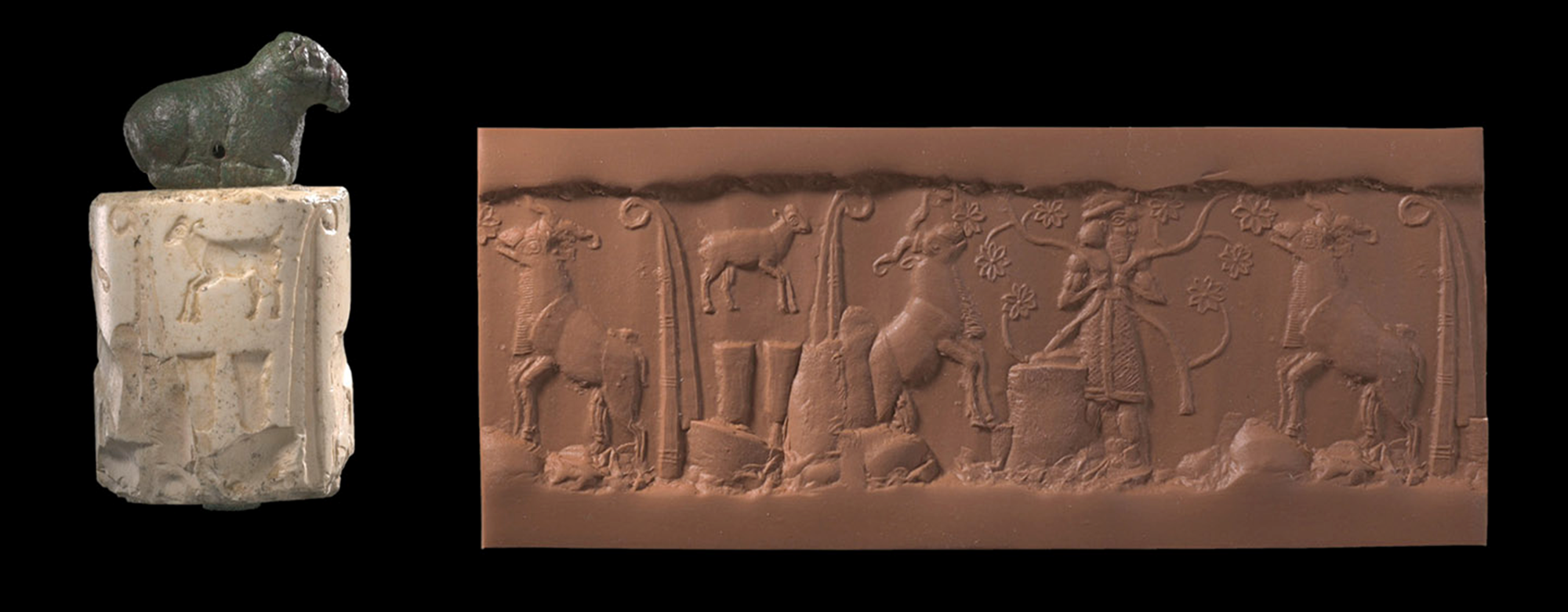
3.10 Cylinder seal and its (modern) impression from Uruk, (Warka, Iraq), 3300–3100 BCE. Marble, height 2 in. (5.1 cm). Vorderasiatisches Museum, Berlin.
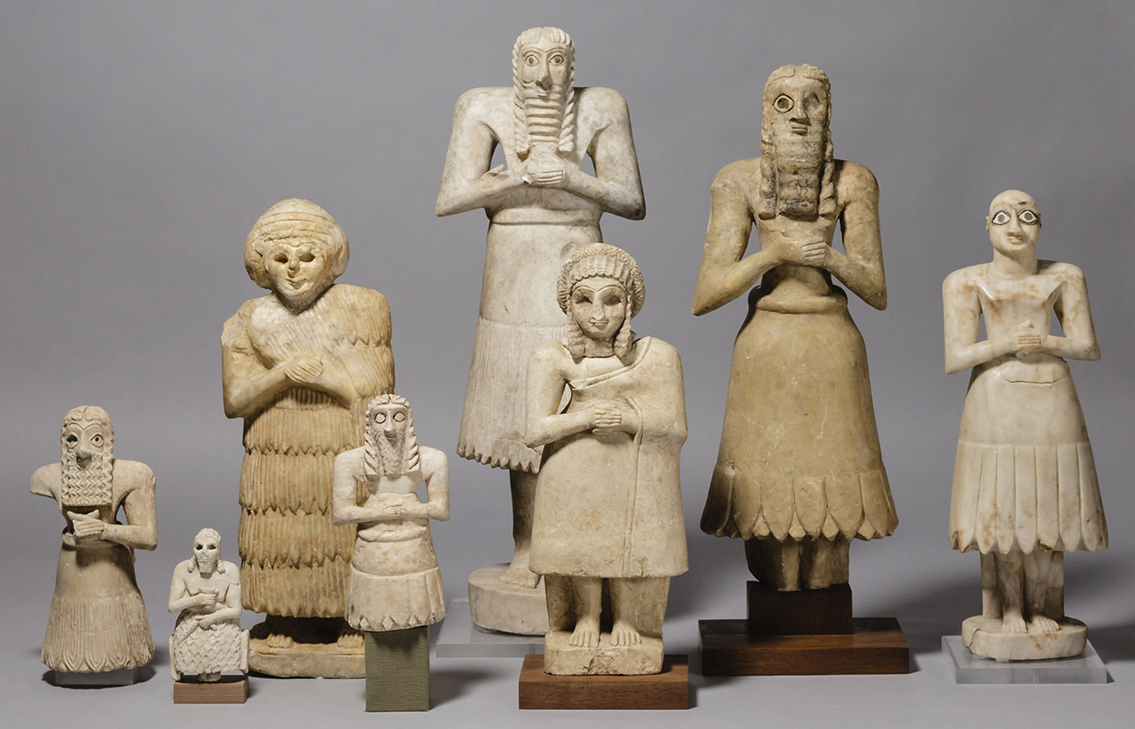
3.11 Votive figures from the Temple of Abu, Eshnunna (Tell Asmar, Iraq), 2750–2600 BCE. Gypsum, limestone, and alabaster with eyes inlaid with shell, black limestone, and lapis lazuli, largest figure height 29⅞ in. (75.9 cm). The Oriental Institute Museum, University of Chicago.
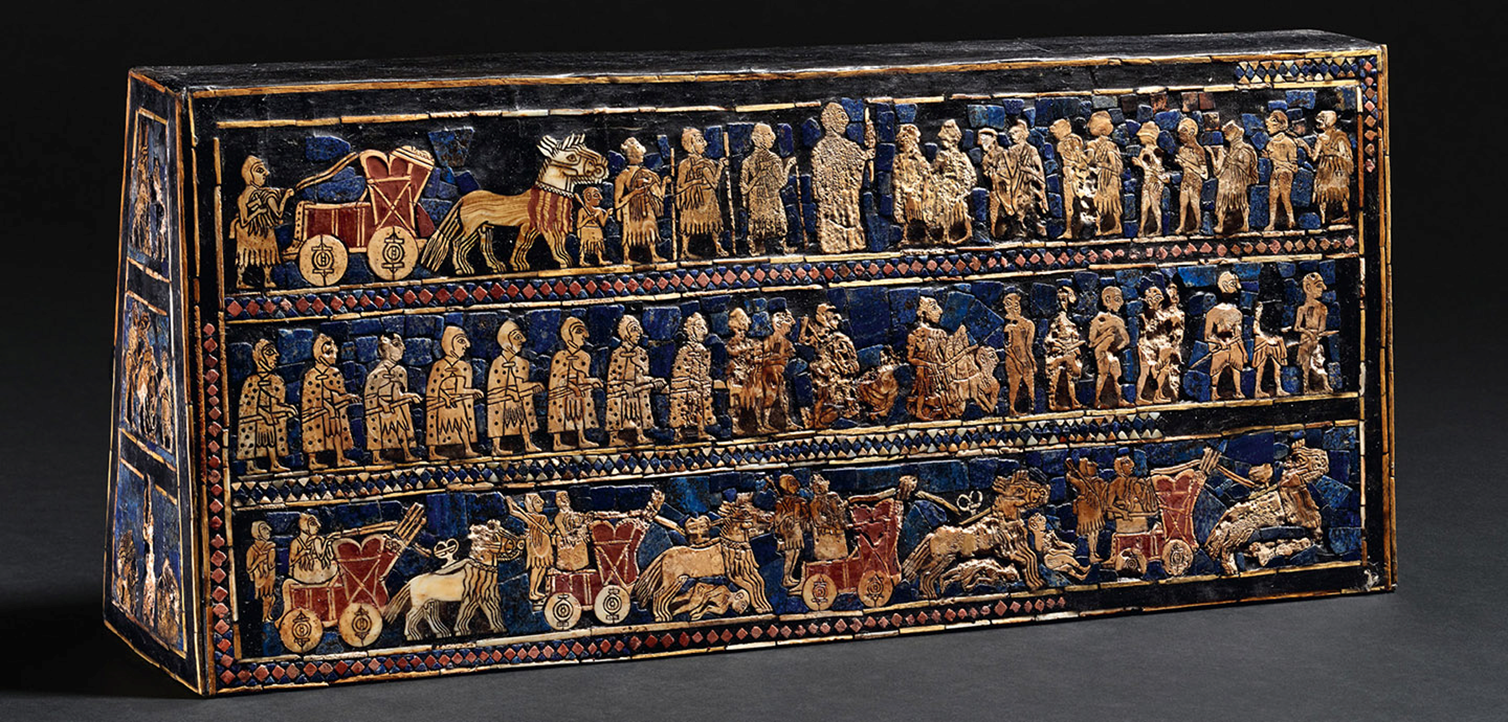
3.12a Royal Standard of Ur, battle side. From Tomb 779, Royal Tombs of Ur (Tell el-Muqayyar, Iraq), Early Dynastic IIIA period, 2550–2400 BCE. Wood inlaid with shell, lapis lazuli, red limestone, and bitumen, 7⅞ in. × 18½ in. (20 × 47 cm). British Museum, London.
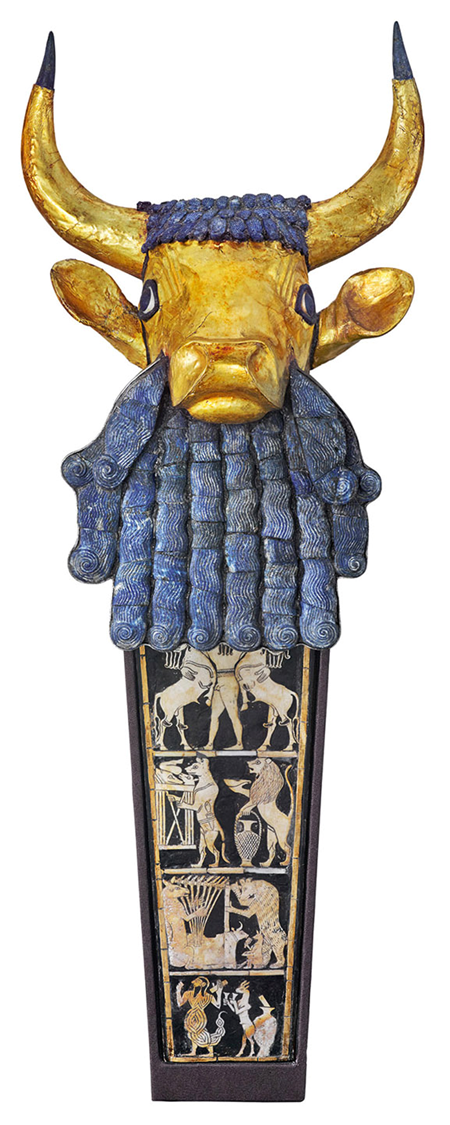
3.13 Great Lyre with bearded bull’s head, from Tomb 789, Royal Tombs of Ur (Tell el-Muqayyar, Iraq), Early Dynastic IIIA period, 2550–2400 BCE.University of Pennsylvania Museum of Archaeology and Anthropology, Philadelphia
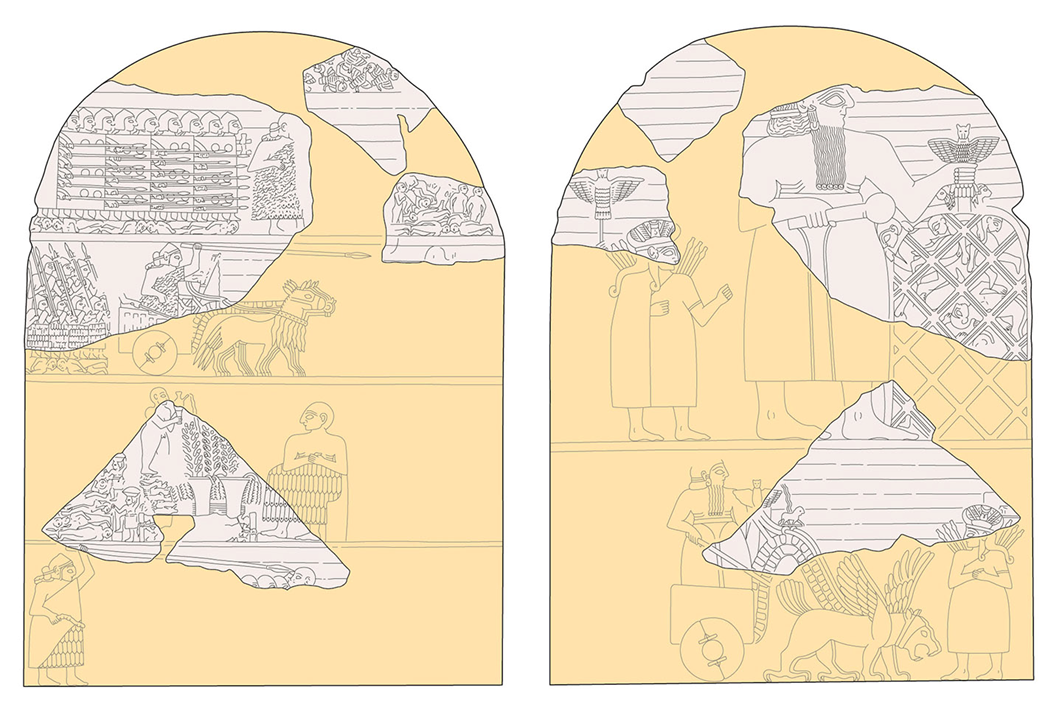
3.14 Stele of Eannatum (reconstruction drawing), from Girsu (Tello, Iraq), c. 2460 BCE. Sections in white are drawings of the actual fragments while the yellow parts are conjectural. Musée du Louvre, Paris.
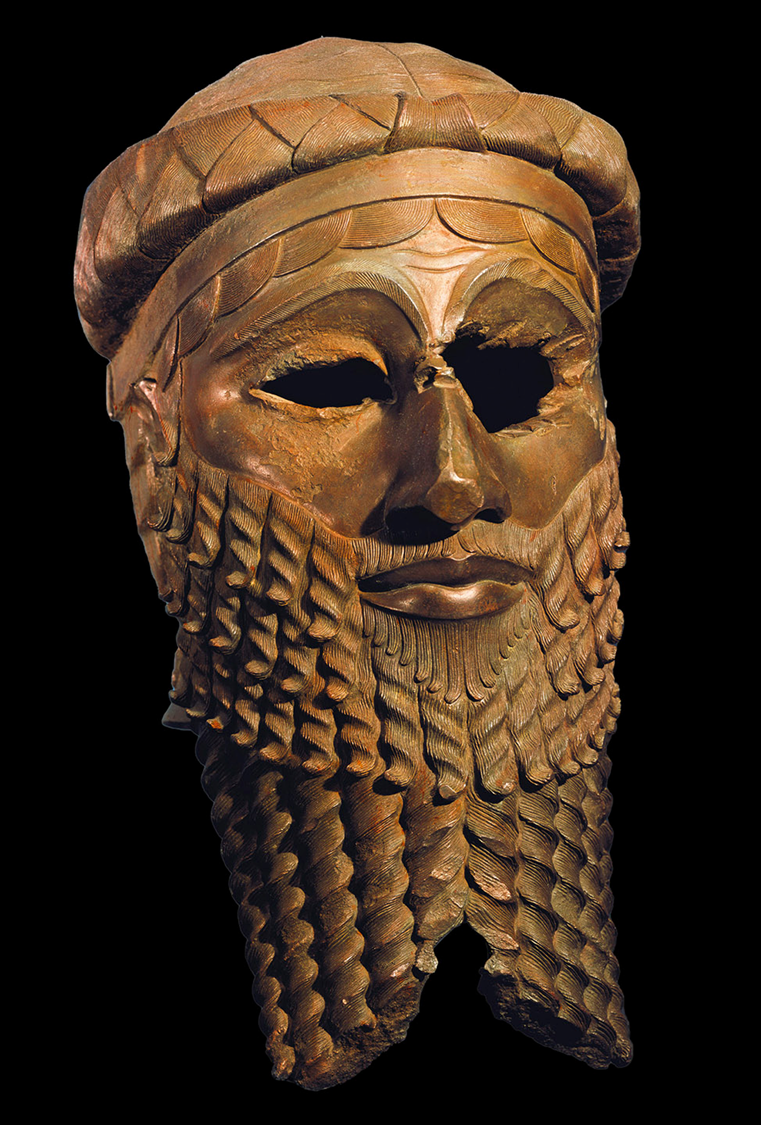
3.15 Head of an Akkadian ruler, temple of Ishtar, Nineveh (Mosul, Iraq), Akkadian period, c. 2250–2220 BCE.Iraq Museum, Baghdad
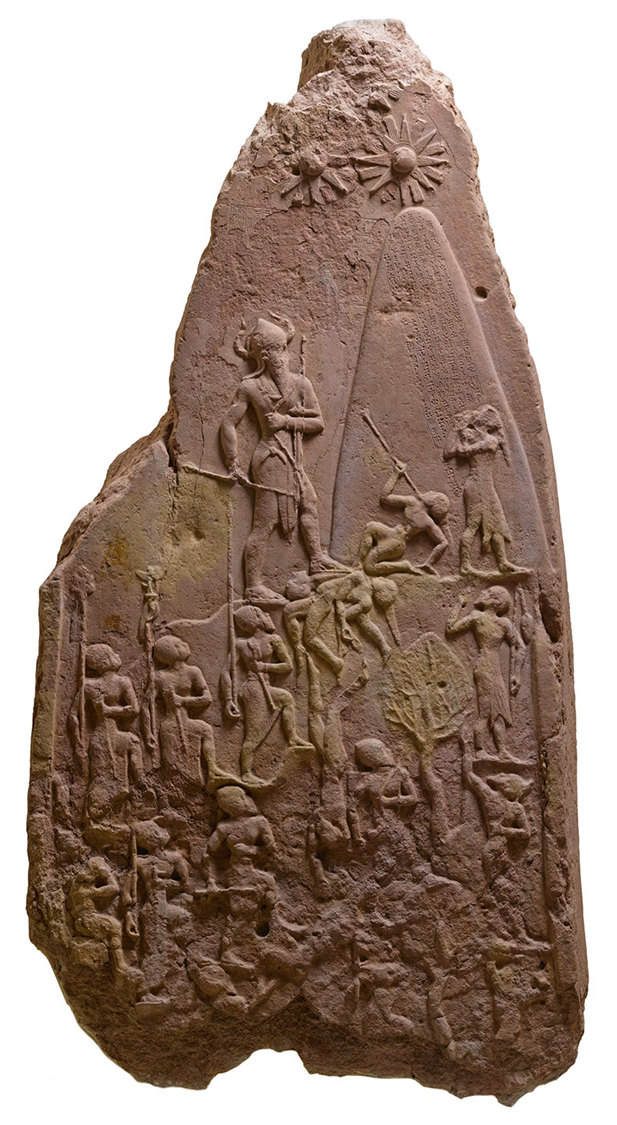
3.16 Stele of Naram-Sin, found in Susa, Iran, Akkadian period, 2254–2218 BCE. Limestone, height 6 ft. 6¾ in. (2 m). Musée du Louvre, Paris
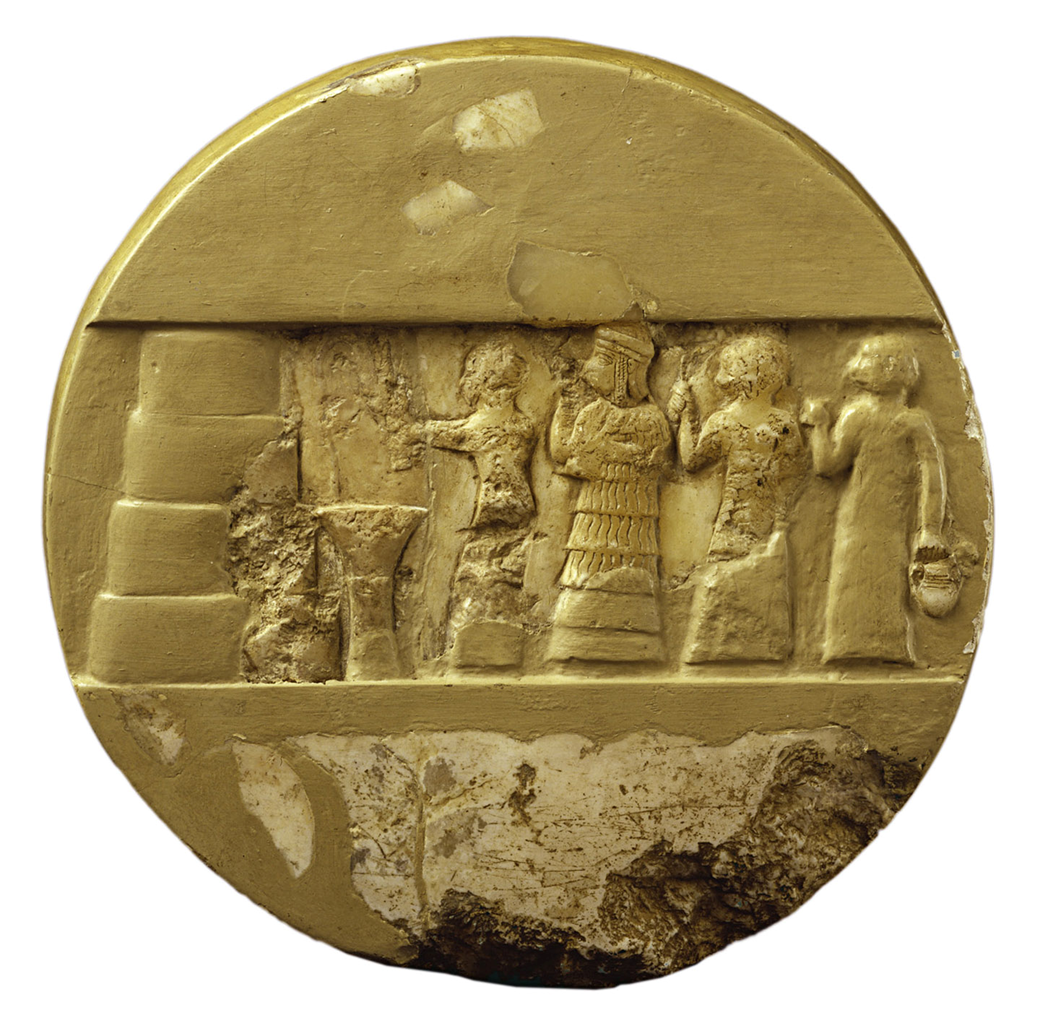
3.17 Disk of Enheduanna, found in Ur (Tel el-Muqayyar, Iraq), c. 2300–2275 BCE. Alabaster, diameter 10 in. (25.4 cm). University of Pennsylvania Museum of Archaeology and Anthropology, Philadelphia
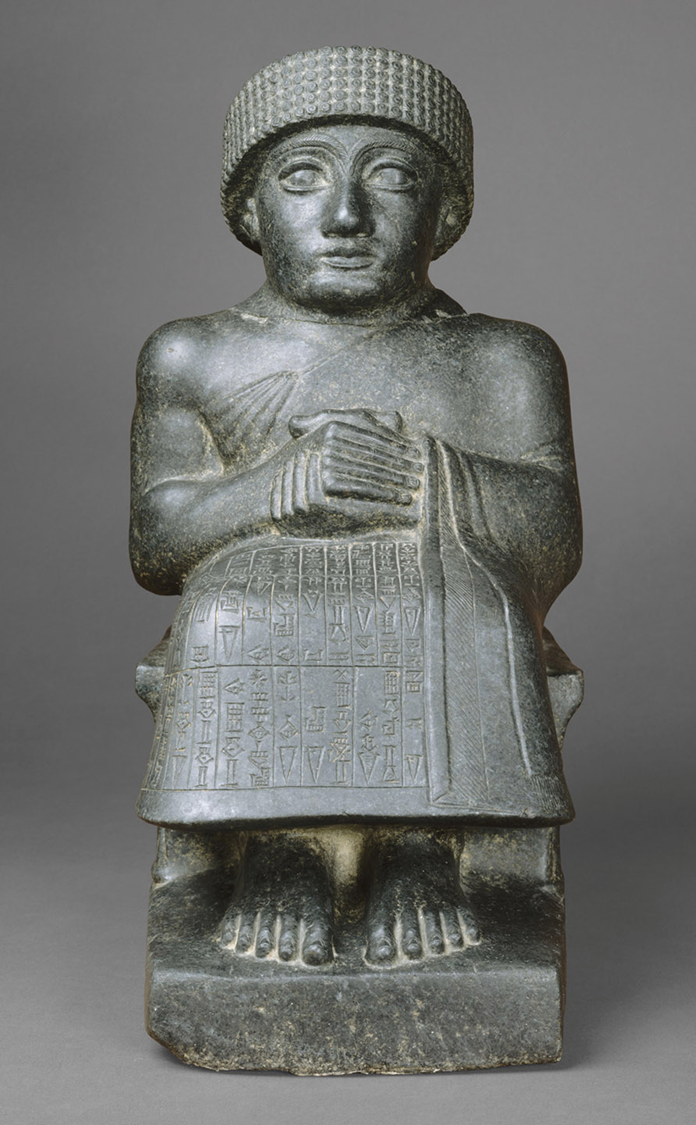
3.18 Seated statue of Gudea, ruler of Lagash, dedicated to the god Ningishzida, Girsu (Tello, Iraq), c. 2120 BCE. Diorite, 18⅛ × 13 in. × 8⅞ in. (46 × 33 × 22.5 cm). Musée du Louvre, Paris.
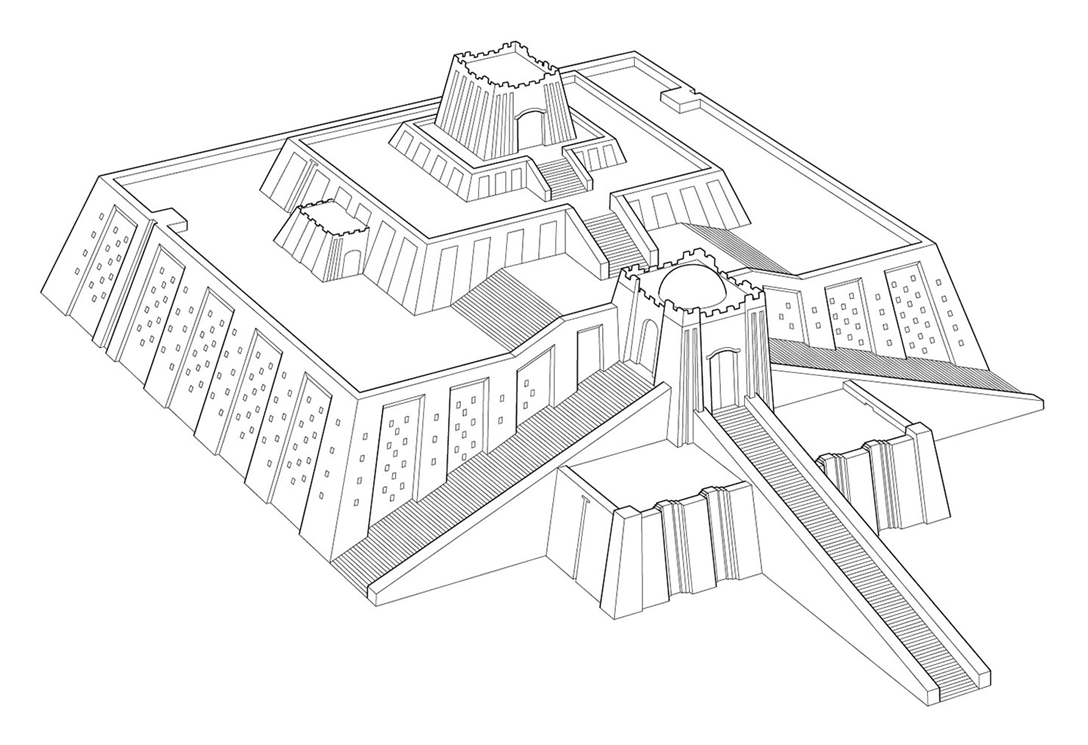
3.19 Ziggurat at the Sanctuary of the Moon God Nanna (reconstruction drawing), Third Dynasty of Ur (Tell el-Muqayyar, Iraq). Built at the time of Ur Namma (ruled 2112–2095 BCE).